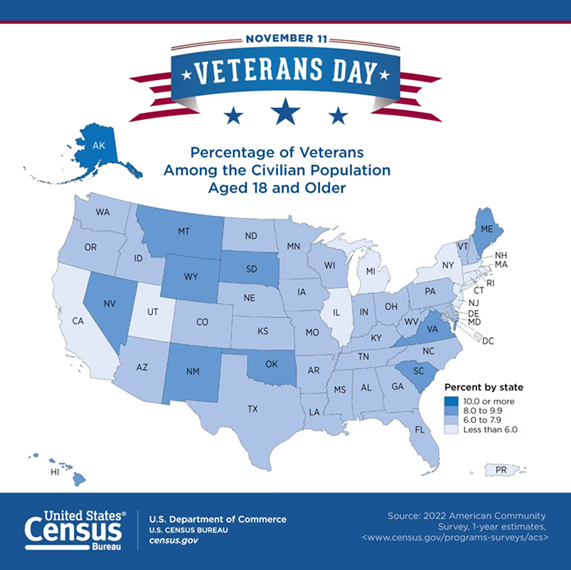Veterans Day will be celebrated on November 11. This federal holiday honors all those, both living and dead, who served in the U.S. Armed Forces during war or peacetime. (By contrast, Memorial Day, celebrated at the end of May, honors those who died in military service, while Armed Forces Day, also in May, honors those who are currently serving in the military.)
Parades and other observances will be held across the country to recognize our veterans. Federal (including military) employees, most state government workers, and about 25 percent of those employed at private companies will get the day off on November 10. Tourists will visit the many war memorials on the National Mall—those to World War I, World War II, the Korean War, the Vietnam War, Desert Shield and Desert Storm. A solemn ceremony at the Tomb of the Unknown Soldier at Arlington National Cemetery will be attended by many dignitaries and most likely by the President of the United States.
And yet, despite the pomp and circumstance, until recent years it has been all too easy to forget how fragile the fruit of our veterans’ service—our democracy—can be. Our veterans have been guarantors and defenders of our rights and liberties. Compared to the growing instability around the world—in Ukraine, the Middle East, China, North Korea, South and Central America—we in the United States continue to enjoy relative stability and freedom, thanks in no small part to those who have fought for all of us. America is still looked to as the leader of the free world, despite our struggles with political divisions, social inequities, supremacist ideologies, and gun violence.
This comparative stability reflects the burden that our military service members have assumed on our behalf: adherence to the Constitution, which places civilian control over the armed forces; sworn allegiance to our republic for the defense of American interests abroad, which avoids bloodshed in our homeland; and deference to civilian law enforcement to maintain domestic public order at the federal, state, and local levels.
Did You Know?
Who are these essential individuals who have been so instrumental in securing our democracy and ensuring our freedoms at home? The following data points help paint a picture of our diverse U.S. veteran population:
Total number of military veterans: 16.2 million in 2022, representing 6.2 percent of the total civilian population age 18 and over.
Wars: 0.8 percent of veterans in 2022 served in World War II, 4.1 percent served in the Korean War, 33.6 percent in the Vietnam War, 24.4 percent in the first Gulf War (August 1990 to August 2001), and 26.3 percent in the second Gulf War (September 2001 or later).
Race/ethnicity: The percentage of veterans in 2022 who were Hispanic or Latino (of any race) was 8.6 percent. Additionally, 72.3 percent of veterans were white alone (not Hispanic or Latino), 12.4 percent African American, 2.1 percent Asian American, 0.8 percent American Indian or Alaska Native, 0.2 percent Native Hawaiian or Other Pacific Islander, and 2.8 percent “Some Other Race.” The percentages include only those who reported a single race.
Women: 1.7 million in 2022, representing 10.3 percent of the total veteran population.
Age: Over the last 80 years, America’s involvement in wars and conflicts around the world has left a legacy on the size and composition of the veteran population. In 2022, 26.5 percent of veterans were 75 or older, about half were 65 or older, and three-quarters are over the age of 50, reminding us that the twentieth-century wars the United States fought in Europe and Asia still substantially shape the size and composition of today’s veteran population. These older veterans are an important link to America’s past conflicts. They contribute to the nation’s collective memory of wartime experiences, including the reasons veterans fought in these wars and how relevant their service was—and is—to their lives and the lives of their families. This experience and these memories, it is important to note, will soon pass into history unless we make the effort to honor their sacrifices.
The data also point to the fact that military experience used to be more common in the past, while today it is limited to a much smaller segment of the population. Between 1980 and 2017, for example, the proportion of all adult men in the United States who had served in the military fell from 37 percent to 14 percent.

Regardless of our political leanings, on November 11 we as Americans must remember—and, by seeing and hearing from our veterans, can remember through their memories—the debt we owe them. Let us honor them for their willingness to dedicate their lives to our welfare. And let us never forget their sacrifice.
—Martha Y. Zavala and Chris Moose